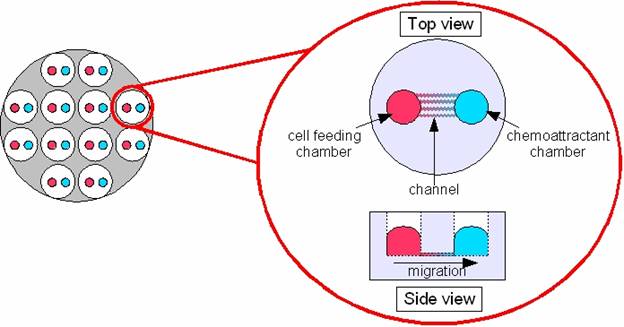Cellular migration is fundamental to various in vivo processes including organogenesis, metastasis, and wound healing. Therefore, characterizing cellular movement is essential for understanding these biological processes and in making future medical breakthroughs related to them.
Cells move in response to external stimuli. Chemotaxis is the process of stimulating cell migration in specific directions based on chemotactic agents. Chemotaxis can be studied with several different methods. The Boyden chamber assay is currently the most commonly used. It involves the migration of cells through a microporous filter toward a high concentration of chemoattractant placed in a well below the filter. After migration the filter is stained and the cells are counted. The Boyden chamber assay is relatively simple to perform; however, it has several limitations. The assay is long and tedious, has poor reproducibility, requires a large number of cells to obtain a signal, and the movement of cells through the filter cannot be visualized.
The goal of this project is to design a novel device to be used for the study of cellular migration (Figure 1). It should be able to reproduce the results of the Boyden chamber while eliminating as many of its limitations as possible.

Figure 1. Schematic of a microfluidic device for evaluating cell migration and chemotaxis.